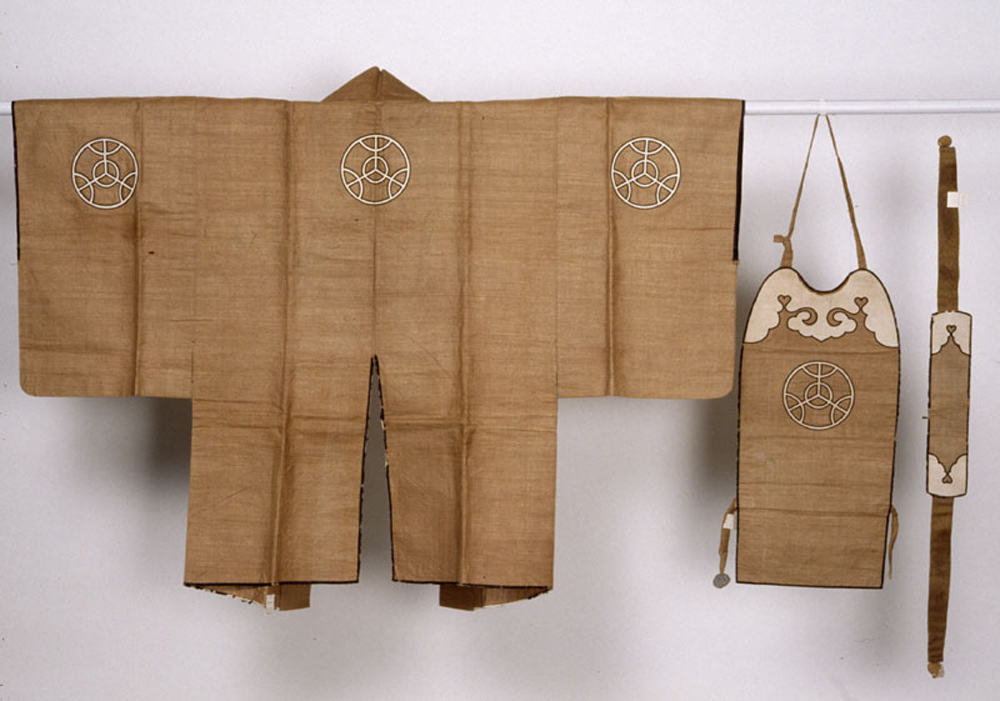Activity
Fire Procession Costume, 1700–1900

Fire procession costume
Who were the Edo firemen?
Fires in Edo Japan were a constant danger. Buildings were built primarily of wood and paper, and open hearth fires were common. Earthquakes often precipitated terrible fires, and this is a continued threat in Japan today, as realized in the Kobe earthquake of January 17, 1995. Between 1601 and 1806, four major fires destroyed much of the city, and numerous smaller fires caused untold damage and hardship. Merchants expected to be burned out once or twice per decade and planned this expense into their accounts. Firemen, therefore, were important people in Edo society. Their brigades were often organized from samurai ranks. They were heroic figures, who swaggered about town and even affected a special kind of macho lingo. They were much admired and imitated. Fires also held a fascination for the people, and were popularly called the “Flowers of Edo,” a surprising phrase that shows the capacity of Edoites to find humor and beauty even in extreme danger.
How was this costume used?
This costume, consisting of a jacket, bib, and headband, is for ceremonial purposes not firefighting (a fire-fighting outfit consisted of a leather or padded cotton jacket and leggings that were soaked in water to prevent them catching fire). This jacket was probably created for occasions and processions such as the annual fire fighters’ parade, at which firemen showed off their skills as in the photo below. Although fire fighting methods have changed drastically since the Edo period, the parade, known as the Dezome shiki still takes place every January 4, and spectators can view the daring acrobatics of the traditional fire-fighter. A similar jacket to this, made of cheaper material like cotton, was worn by the brigade’s standard bearers to the fire.
What is the decoration?
Every fire brigade in Edo had an identity that was symbolized by its mon (a crest, or a kind of graphic logo). Firemen raced to the scene of a fire behind the standard bearer, who held high a large red lantern boldly painted with the brigade’s mon for all to see. He and his assistants then ascended a nearby building to supervise the efforts of the brigade and warn them of back drafts or changes in the fire’s direction. The mon is repeated three times across the back of the jacket and decorates the bib.
Discussion/Activities:
- What makes a hero? The firemen of Edo were admired for their bravery, physical skill, appearance, and mannerisms of speech. Who are our heroes today and why? This could be a research assignment, where students write about someone they admire, be it a rock star, athlete, family member, or friend.
- Design your own mon. As part of Making a Temple Book, distribute the Handout: Japanese Mon and ask students to draw one they like. Have students create their own mon that in some way represents their identity, hobbies, favorite animal, etc. Have them create a stamp with their design as in Making a Temple Book.






